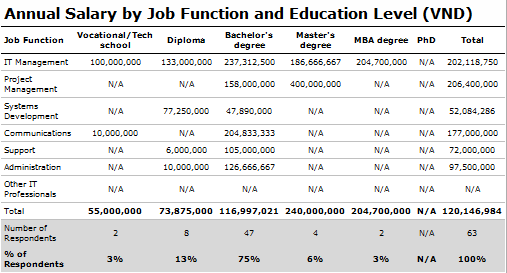Most of the world’s 500 largest firms have extensive international operations; indeed, these firms average 35% of their sales in other countries. Finance officers and senior executives involved in strategic management usually assume that such firms are operating globally.
Recent TRG blog posts
Rick Yvanovich
Recent TRG Blog Posts
Multinationality and Financial Performance
Posted by Rick Yvanovich on Wed, Feb 22, 2012
Blog Topics: CFOs, Financial Accounting Management Software, Infor SunSystems
Financial Reporting: 3 Key Best Practices
Posted by Rick Yvanovich on Wed, Feb 22, 2012
Newsflash: In many organizations, variance reviews become a meaningless drill and here's why. Firstly, variances are explained by inherent uncertainty in the marketplace. Secondly, the level of detail may be inconsistent between finance and line managers. Thirdly, it’s a bunch of disconnected numbers.
Blog Topics: Financial consolidation, planning and reporting, Financial Accounting Management Software
How to Implement a Standard Chart of Accounts Effectively
Posted by Rick Yvanovich on Tue, Feb 21, 2012
Executive Summary
A chart of accounts (COA), representing a unique set of codes to record all an entity’s transactions consistently, is a well-recognised, fundamental accounting need. Whether it concerns a complex organisation with numerous divisions, or an individual applying basic cash accounting, it is essential to be able to collate financial information that is relevant, both for internal management and external parties.
Blog Topics: Financial Accounting Management Software, Infor SunSystems
Citrix: Virtual Desktops About to Become Cheaper Than Physical Ones
Posted by Rick Yvanovich on Tue, Feb 21, 2012
Citrix says it's driven down costs to the point that next year it will be cheaper to deploy virtual desktops than traditional desktops. Helping to drive down costs is a new system-on-a-chip the company has designed called HDX and that it says will be produced by Texas Instruments and put into commercial devices by NComputing as well as other partners to be named.
The virtual workplace powered by XenDesktop at Adelante
Posted by Rick Yvanovich on Mon, Feb 20, 2012
“We expect a gradual growth as well as new usage scenarios like flexible desktops and for example tablets for medical staff. Citrix XenDesktop and the Citrix Receiver enable this functionality without further modifications in the infrastructure.”
René Jacobs, Team manager I&A, Adelante
Adelante is a healthcare group for adult rehabilitation, job reintegration, pediatric rehabilitation, special education and housing, and audiology & communication as main services. The organization supports adults and children in restoring their health. The organization also helps clients to obtain maximum participation in the society after the effects of a disease, disorder or accident. Adelante invests in the development and dissemination of knowledge through scientific research, education, training and innovation. In addition, Adelante is active in outpatient clinics of hospitals and for example ambulant guidance of schools. Adelante has branches in Hoensbroek and seven other cities in the region of Limburg. The healthcare group employs over 1,000 employees.
The challenge – a secure solution for telecommuting
About five years ago the organization started with a cloud-based remote control service to enable a few employees to access central workstations on the network from remote locations. Use of this service grew rapidly and therefore the IT management became more intensive and expensive, especially because the costs were calculated per year and per individual employee.
“We got requests from the organization to implement an internal telecommuting solution to enable employees to work from home, but that would also be flexible enough for ambulant staff and workstations at subsidiaries without a fast connection,” said Rene Jacobs, I&A team manager at Adelante. As IT staff, we had all freedom to select the technology we needed, from a traditional VPN solution to a modern VDI environment. We started looking for a solution that matched our demands and was able to replace the cloud-based service.”
Implementing Citrix XenDesktop, Enterprise Edition
The organization found the perfect solution in the hosted virtual desktop. After an internal evaluation and comparison was performed, Adelante selected Citrix® XenDesktop®, Enterprise Edition. Insign.it, a Gold Citrix Solution Provider, supported the organization with the architecture and implementation. Last year, Adelante completed the first renewal phase of the infrastructure in the data center. This included the replacement of all servers by HP blades with virtualized workloads and rolling out an EMC SAN. The blueprint for desktop virtualization was now there and could easily be extended. The organization now has 60 virtualized Windows® XP workloads running on Citrix XenDesktop, all on one blade server. These virtualized desktops are used by 150 people, ranging from ad hoc and regular home users as well as ambulant employees to 40 employees at locations with slower connections that use the virtual desktop full-time.
The failure-free versatile virtual desktop
Each time a virtual workstation is started at Adelante, the employee receives a fresh new Windows XP PC. Citrix provisioning services, a component of XenDesktop, ensures the provision of the standard image. The organization uses about 200 applications, including Office 2003 Professional, the electronic patient record Ecaris of VIR e-Care solutions, the audiology patient registration OpenAC Fenac and for example IBM SPSS. Jacobs: “Standard applications are included in the image, but many of the smaller rehabilitation-related applications are added when needed by the software distribution process. Employees can make changes on the PC, but after the next reboot, all changes including added applications have disappeared. This way we created a fast and failure-free virtual workspace that can be used for many more roles than just teleworkers. In the future, we expect even more benefits after we start using application streaming.”
One desktop, both virtual and physical
At Adelante and the special school for the disabled that is run by Adelante, over 750 fat client workstations are used. At locations where dark fiber connections are too expensive, for example at rented venues, the virtual desktop is delivered through a secured Internet connection and xDSL. Every day, approximately 40 employees use the centralized virtualized desktop full time from their fat client. The main reason for not using thin clients at these locations, is that there are applications that require a DVD-ROM drive or have a license technically tied to a workstation. “A major advantage of the solution is that the virtual workstations can be managed the same way as the physical desktops. Identical tools and for example the same policies for security upgrades apply to both environments. Although it is impossible to quantify in hours, we save a lot of time for system administration compared to the old situation,” Jacobs said. “The virtual workplace is stable and runs thanks to Citrix HDX™ technology smoothly for multimedia, YouTube and even works even for health care applications that need sound.”
The blueprint provides a stable basis for growth
The deployment of desktop virtualization at Adelante will grow in the coming years, this trend is already visible. The blade server hosting the Windows XP workload reaches its limits. “Expanding this IT environment is very simple. Adding a blade server to increase capacity and double the available number of Windows XP workloads is easy. The disk space on the SAN already has been sized for 120 Windows XP sessions and does not need to be expanded, “continued Jacobs “We expect a gradual growth as well as new usage scenarios for the concept. We probably will move to thin clients to be used as flexible desktop. We also want to introduce the Apple iPad or other tablets so the medical staff has access to patient records at the bedside of the clients. With Citrix XenDesktop and Citrix Receiver for the iPad this is very simple without further modifications in the infrastructure.”
Neutral replacement cost with high value
The organization was particularly impressed by the concurrent use licenses of XenDesktop. With 150 users, 25 to 40 concurrent licenses are sufficient. If Adelante had not opted for XenDesktop but for a different solution, IT costs would have been definitely higher. “Thanks to concurrent use licenses, we funded the new environment from the annual costs of the previous cloud-based solution,” concluded Jacobs. “We have not only addressed telecommuting, but also enabled secure access over the Internet from several locations and prepared for possible future expansions, all with the same solution. One investment solves our challenge for working from home, extends the usage scenarios and prepares us for future developments.”
Source: CitrixBlog
Great CEOs are Born, Not Made
Posted by Rick Yvanovich on Mon, Feb 20, 2012
Bob Lutz in his recent book Car Guys vs. Bean Counters makes the point that GM was doing fine until in the mid 1970s the MBA-trained finance guys took control of product development from the "car guys," who were engineers and designers. The result, he says, was inferior cars and a decline in the firm. He believes that CEOs and the top management should not be bean counters but rather should be a "product guys."
The poster child for his view was Roger Smith who was an MBA-trained accounting and finance specialist. During his ten year tenure as GE's CEO during the 80s, Smith made breathtaking strategic and operating blunders. He invested in robotics that did not work, created a disastrous reorganization that resulted in cars so similar they were a joke (remember the Cadillac Cimarron?), mismanaged some ill-conceived acquisitions, built up enormous debt, and on and on. GM's share went from 45% to 36% under his watch. A role model, on the other hand, was Steve Jobs, with no degree but deep computer expertise, who spawned a string of product successes brilliantly executed.
I think Bob is an impressive executive (ironically he does have an MBA although it was in the pre-quant MBA era; Berkeley-Haas is proud to claim him), but I disagree with his suggestion that background, product knowledge, or management style (he advocates an autocratic style) are predictors of CEO performance and behavior. Lou Gerstner did not know anything about computers when he brought IBM back from the near dead and Allan Mulally had no background in automobiles when he took over Ford. And I don't believe that having an MBA or being in finance necessarily means that you are short-term focused or insensitive to customer demands.
Instead, in my view, a gifted CEO needs two qualities, and I believe that these come with birth, and not training. They are executive talent and strategic judgment.
Executive talent. Executives need a broad range of talent; excelling on a few dimensions is rarely enough. A truly gifted CEO should have a good feel for selecting, motivating, and evaluating people; developing and selling a strategy; creating an inspiring culture; developing an organizational structure and management process that work for the strategy; fostering cooperation across silos; understanding and using financial measures; and an understanding of how marketing, branding, finance, production, distribution contribute to strategy. With the right talent and DNA, a CEO who is missing background in some of these areas will quickly pick it up.
Strategic judgment. Some people just have a flair for good judgment — whether it is an ability to identify issues, distill facts, or develop instincts to make sound strategic decisions — and others simply do not. This too, in my opinion, is something you are born with. In my field, I see many who have deep experience in branding but relatively few that have a strategic flair. It can be improved but it cannot be created.
There are many with the talent and judgment to be successful CEOs that never get the opportunity to learn, to have the right experience, or to prove themselves. But, in my view, those that lack those qualities will not be successful no matter what background, training, experience, or mentoring they might have.
Source: HBR
Author: David Aaker
Blog Topics: Talent Management
Technology Enhancements-Timing is Everything
Posted by Rick Yvanovich on Mon, Feb 20, 2012
About 4 years ago, our firm began to implement an enterprise system. Several months into the project, I had to hit the abort key. The software did not gel with my team’s habits, processes, preferences and collaboration techniques. We just weren’t ready.
I, like many entrepreneurs, fell into a trap. I was romanced by a technology. Those of us committed to improvement often see tools that are sexy, and interesting and we feel like we have to have them. Technology and gadgets can be like crack.
This is why many information technology professionals are cynical about new tools, especially trendy ones that don’t fit within narrowly defined parameters. They see the potential flaws, and often act to mitigate the risks. We should listen to them, and avoid the tendency to chase shiny objects.
What I see in entrepreneurial firms is that having the right solutions is very important, and implementing them at the right time is equally important. I have seen clients wait too long to implement enterprise tools and that has hurt them (creating a competitive disadvantage). But the opposite is also true-attempting to execute technology projects based on arbitrary target dates is a slippery slope.
Successful technology implementations require a complete organizational commitment, from top to bottom. In order to affect successful projects, companies must vet a software’s capabilities, and carefully plan its implementation. The cost of failure is very high. Rushing to judgment, skipping steps and trying to cut out expenses such as scoping and training can cause dire consequences.
In most implementations, there is a single point of failure; users and contributors rely solely on IT to manage the project. A very consistent problem is that nearing completion, users realize their new toy doesn’t fulfill the company’s needs, or offer features of the software it is to replace. If users are not required to be accountable for scoping a project from the onset, they are almost always disappointed.
I once read that over 90% of ERP implementations are late, not to mention over budget. In such instances, people are quick to blame IT or their vendors, when it is often organizational inertia that blows up the project in the first place. Unfortunately, there are very few technologists that are savvy enough to write business requirements that capture everything software must do to satisfy its users. That is why the users themselves have to take a more active role in understanding how their systems will work.
As you consider upgrades to your system, whether they are minor or significant, select your system carefully, plan the steps rigorously, and implement at a point in time when your team has the bandwidth to manage the project effectively.
Source: Executive Street
Author:Marc Emmer
Blog Topics: Talent Management
The virtual workplace powered by XenDesktop at Adelante
Posted by Rick Yvanovich on Mon, Feb 20, 2012
“We expect a gradual growth as well as new usage scenarios like flexible desktops and for example tablets for medical staff. Citrix XenDesktop and the Citrix Receiver enable this functionality without further modifications in the infrastructure.”
René Jacobs, Team manager I&A, Adelante
Adelante is a healthcare group for adult rehabilitation, job reintegration, pediatric rehabilitation, special education and housing, and audiology & communication as main services. The organization supports adults and children in restoring their health. The organization also helps clients to obtain maximum participation in the society after the effects of a disease, disorder or accident. Adelante invests in the development and dissemination of knowledge through scientific research, education, training and innovation. In addition, Adelante is active in outpatient clinics of hospitals and for example ambulant guidance of schools. Adelante has branches in Hoensbroek and seven other cities in the region of Limburg. The healthcare group employs over 1,000 employees.
The challenge – a secure solution for telecommuting
About five years ago the organization started with a cloud-based remote control service to enable a few employees to access central workstations on the network from remote locations. Use of this service grew rapidly and therefore the IT management became more intensive and expensive, especially because the costs were calculated per year and per individual employee.
“We got requests from the organization to implement an internal telecommuting solution to enable employees to work from home, but that would also be flexible enough for ambulant staff and workstations at subsidiaries without a fast connection,” said Rene Jacobs, I&A team manager at Adelante. As IT staff, we had all freedom to select the technology we needed, from a traditional VPN solution to a modern VDI environment. We started looking for a solution that matched our demands and was able to replace the cloud-based service.”
Implementing Citrix XenDesktop, Enterprise Edition
The organization found the perfect solution in the hosted virtual desktop. After an internal evaluation and comparison was performed, Adelante selected Citrix® XenDesktop®, Enterprise Edition. Insign.it, a Gold Citrix Solution Provider, supported the organization with the architecture and implementation. Last year, Adelante completed the first renewal phase of the infrastructure in the data center. This included the replacement of all servers by HP blades with virtualized workloads and rolling out an EMC SAN. The blueprint for desktop virtualization was now there and could easily be extended. The organization now has 60 virtualized Windows® XP workloads running on Citrix XenDesktop, all on one blade server. These virtualized desktops are used by 150 people, ranging from ad hoc and regular home users as well as ambulant employees to 40 employees at locations with slower connections that use the virtual desktop full-time.
The failure-free versatile virtual desktop
Each time a virtual workstation is started at Adelante, the employee receives a fresh new Windows XP PC. Citrix provisioning services, a component of XenDesktop, ensures the provision of the standard image. The organization uses about 200 applications, including Office 2003 Professional, the electronic patient record Ecaris of VIR e-Care solutions, the audiology patient registration OpenAC Fenac and for example IBM SPSS. Jacobs: “Standard applications are included in the image, but many of the smaller rehabilitation-related applications are added when needed by the software distribution process. Employees can make changes on the PC, but after the next reboot, all changes including added applications have disappeared. This way we created a fast and failure-free virtual workspace that can be used for many more roles than just teleworkers. In the future, we expect even more benefits after we start using application streaming.”
One desktop, both virtual and physical
At Adelante and the special school for the disabled that is run by Adelante, over 750 fat client workstations are used. At locations where dark fiber connections are too expensive, for example at rented venues, the virtual desktop is delivered through a secured Internet connection and xDSL. Every day, approximately 40 employees use the centralized virtualized desktop full time from their fat client. The main reason for not using thin clients at these locations, is that there are applications that require a DVD-ROM drive or have a license technically tied to a workstation. “A major advantage of the solution is that the virtual workstations can be managed the same way as the physical desktops. Identical tools and for example the same policies for security upgrades apply to both environments. Although it is impossible to quantify in hours, we save a lot of time for system administration compared to the old situation,” Jacobs said. “The virtual workplace is stable and runs thanks to Citrix HDX™ technology smoothly for multimedia, YouTube and even works even for health care applications that need sound.”
The blueprint provides a stable basis for growth
The deployment of desktop virtualization at Adelante will grow in the coming years, this trend is already visible. The blade server hosting the Windows XP workload reaches its limits. “Expanding this IT environment is very simple. Adding a blade server to increase capacity and double the available number of Windows XP workloads is easy. The disk space on the SAN already has been sized for 120 Windows XP sessions and does not need to be expanded, “continued Jacobs “We expect a gradual growth as well as new usage scenarios for the concept. We probably will move to thin clients to be used as flexible desktop. We also want to introduce the Apple iPad or other tablets so the medical staff has access to patient records at the bedside of the clients. With Citrix XenDesktop and Citrix Receiver for the iPad this is very simple without further modifications in the infrastructure.”
Neutral replacement cost with high value
The organization was particularly impressed by the concurrent use licenses of XenDesktop. With 150 users, 25 to 40 concurrent licenses are sufficient. If Adelante had not opted for XenDesktop but for a different solution, IT costs would have been definitely higher. “Thanks to concurrent use licenses, we funded the new environment from the annual costs of the previous cloud-based solution,” concluded Jacobs. “We have not only addressed telecommuting, but also enabled secure access over the Internet from several locations and prepared for possible future expansions, all with the same solution. One investment solves our challenge for working from home, extends the usage scenarios and prepares us for future developments.”
Source: CitrixBlog
The 2011 IT Salary & Skills Report for Vietnam
Posted by Rick Yvanovich on Sat, Feb 18, 2012
The activeTechPros IT Salary & Skills Report compiles an extensive set of salary data and is published annually. This report is based on aggregated data provided by activeTechPros members for the period of January 1 - December 31 2011. Read on for an overview of the IT jobs landscape in Vietnam.
Blog Topics: Talent Management
Going Beyond the Budget
Posted by Rick Yvanovich on Thu, Feb 16, 2012
Corporations spend too much time budgeting and not enough time planning. As you kick off the budget season, you should be thinking about how to derive more business value from the process.
Blog Topics: Planning and Budgeting, Enterprise Performance Management (EPM)
 English
English  Vietnamese
Vietnamese 









